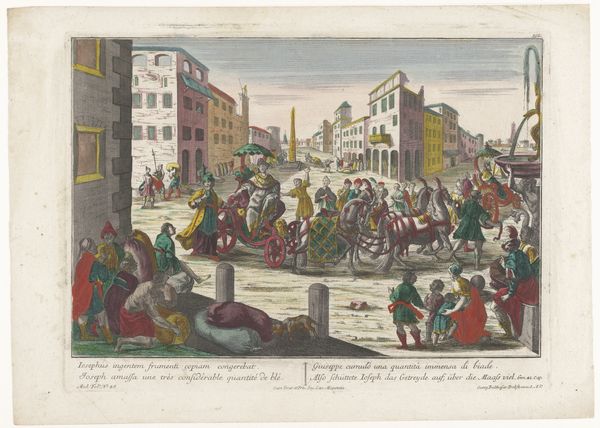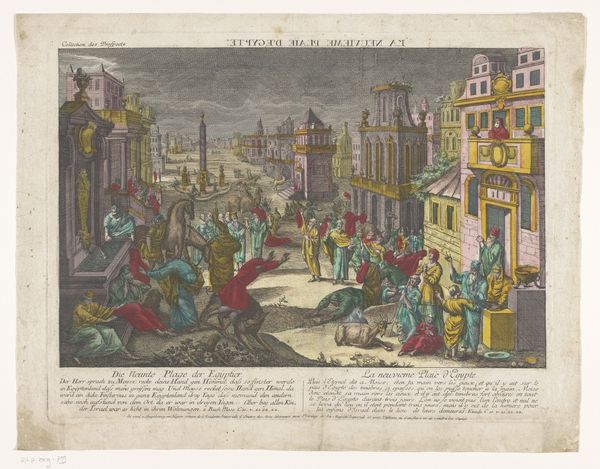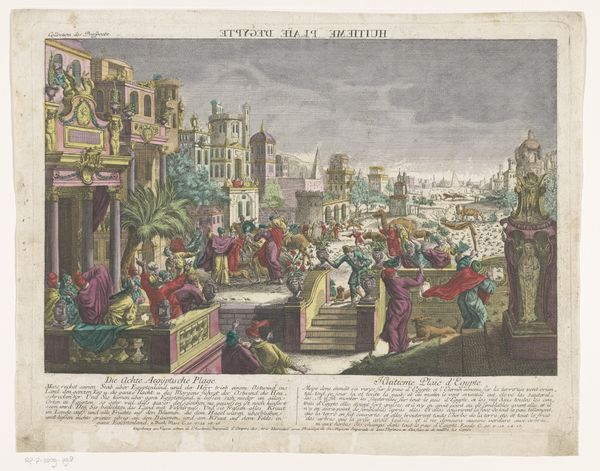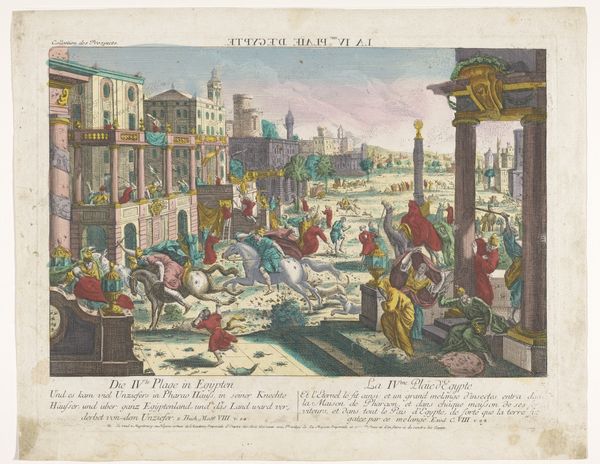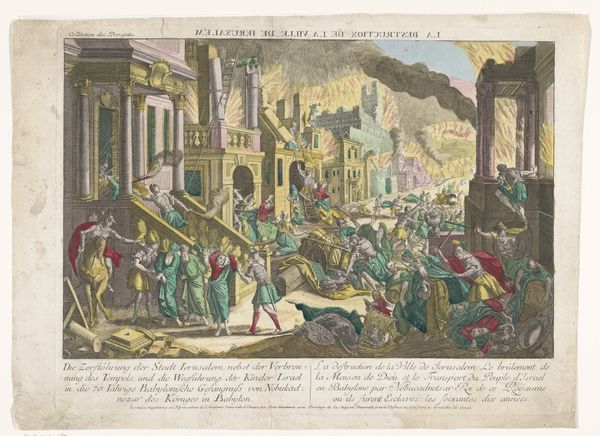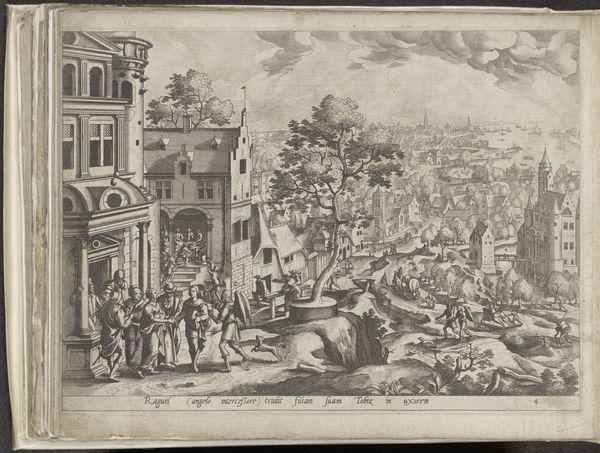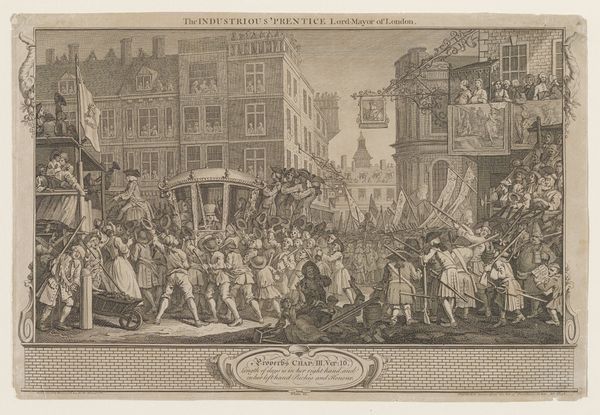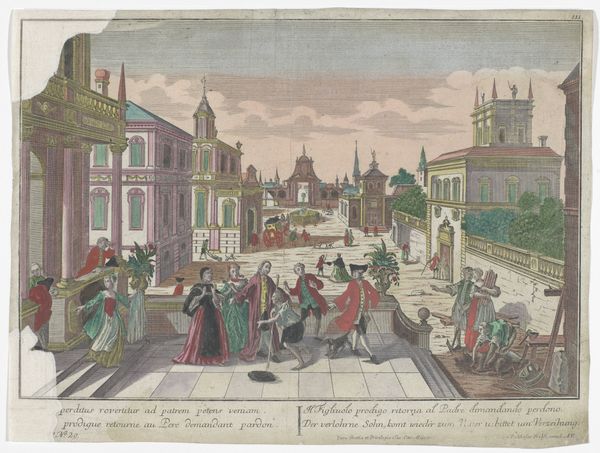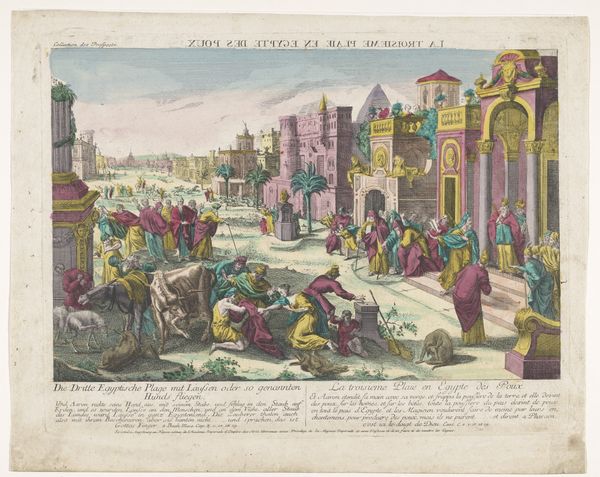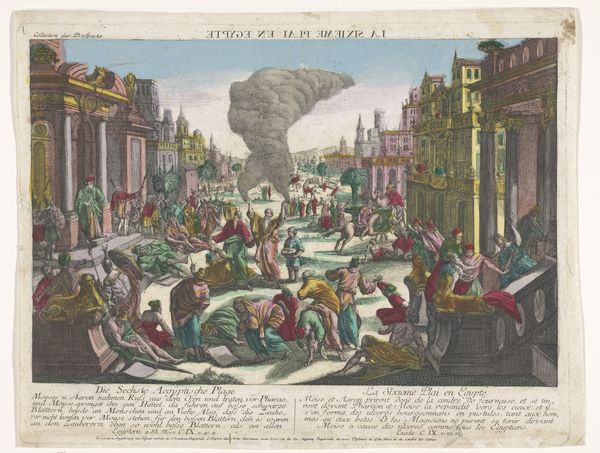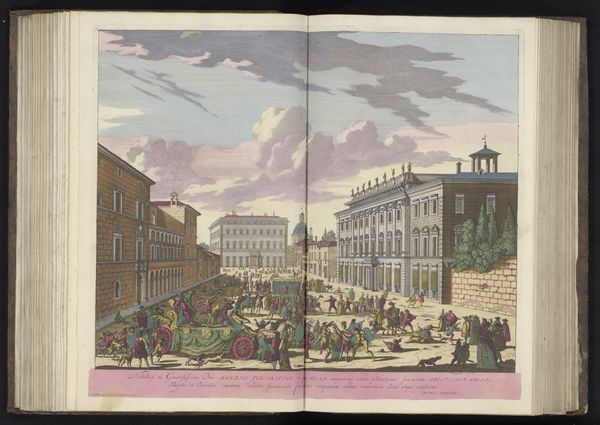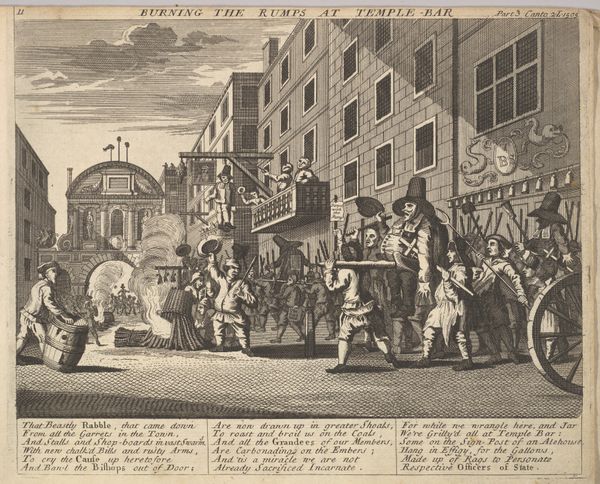
Dimensions: height 328 mm, width 428 mm
Copyright: Rijks Museum: Open Domain
Editor: This is "The Tenth Plague in Egypt," created sometime between 1755 and 1779 by an artist from the Kaiserlich Franziskische Akademie. It's a print, primarily done with watercolor and engraving. There's a real sense of baroque drama happening in the city depicted; it's quite unsettling. What stands out to you the most in this piece? Curator: Unsettling is a good word! It feels like a stage, doesn’t it? The meticulously rendered buildings are like elaborate stage sets, but the real drama unfolds in the foreground with the bodies and grief. The colors are strangely vibrant given the subject matter—does that strike you as odd at all? Editor: A bit. You'd think a scene depicting death of the firstborns would have a darker palette. Curator: Exactly! It clashes intriguingly with the narrative. Now, consider the intended audience for a piece like this back then. Remember, this isn't just a recounting of a biblical story; it’s a depiction laden with moral weight, intended for perhaps instruction, definitely reflection, and dare I say, perhaps even a slight jab at contemporary society. Who might identify with the suffering Egyptians, do you think? Or with the...relief of the departing Israelites? Editor: It's all in the eye of the beholder, as they say. The strong composition really holds everything together, the tension almost adds to it. Curator: And it makes us consider perspective doesn’t it? To truly appreciate art is, well, seeing it from several angles. Editor: I learned how much the emotional resonance in this painting relies on how the color palette clashes so wonderfully with the subject matter, thus prompting further questions and insight! Curator: Absolutely! It really highlights the complexities of historical art and their power.
Comments
No comments
Be the first to comment and join the conversation on the ultimate creative platform.
